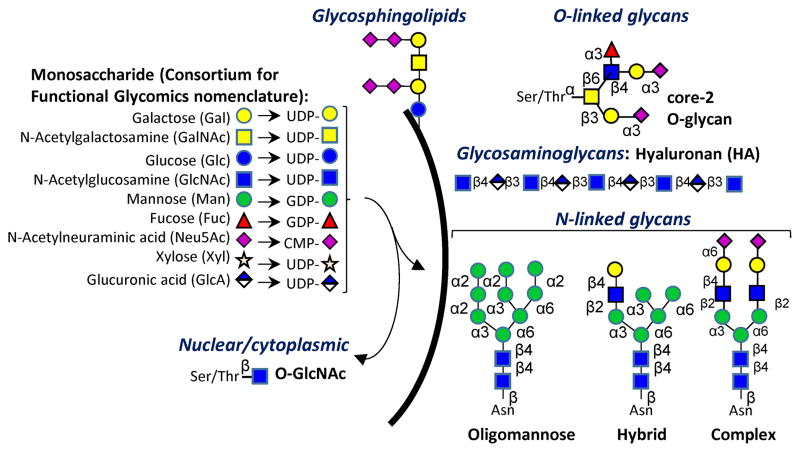Figure 1. Glycosylation overview.
Commonly, nine types of monosaccharides in humans form corresponding sugar-nucleotides (UDP-Gal etc.). A variety of glycoenzymes (particularly the glycosyltransferases and glycosidases) enable the transfer of these monosaccharides to lipid and protein scaffolds. Additional monosaccharides can form, e.g. Iduronoic acid (IdoA), by the epimerization of Glucuronic acid (GlcA) on glycosaminoglycan chains. Carbohydrate structures thus formed decorate the cell surface, and they are also found in intra-cellular compartments. Most glycan families have a limited number of core-structures that are elaborated by repeat extensions (like N-Acetyllactosamine repeats) and terminal modifications.

